Content
Kaiserliches Patentamt (Imperial Patent Office) 1877 - 1919
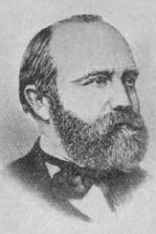
Dr. Karl Rudolf Jacobi
Term of office: 1. Juli 1877 - 30. April 1881
Karl Rudolf Jacobi, born on 8 September 1828 in Jeggau, studied law in Halle and Berlin before entering the administrative service of the Kingdom of Prussia. He rose to the position of Ministerial Director in the Ministry of Trade before being appointed the first President of the newly founded Imperial Patent Office in Berlin.
The beginnings of the Patent Office in Germany were quite modest: During Jacobi's term of office, it had a rather provisional character and its 21 legally competent and technical "members" worked either in administration or industry, their Patent Office duties being just a part-time additional job.
After a few years, Jacobi returned to the Prussian Ministry of Trade as Under-Secretary of State. In 1886 he became State Secretary in the Imperial Treasury, and was ennobled in 1888. He died in Zinnowitz on 24 July 1903.
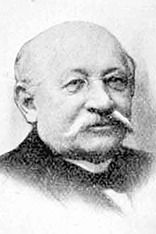
Dr. Gustav Stüve
Term of office: 12. Juli 1881 - 15. Januar 1888
Carl Wilhelm Gustav Stüve, born on 2 May 1833 in Osnabrück, studied law in Göttingen and Berlin. Before becoming the second President of the Imperial Patent Office, he worked as an administrative official in Hanover.
As under the founding president, the number of staff and applications grew steadily during these years; several times the Office had to move to larger premises. After the end of his term of office, Stüve became District President in Osnabrück. The art collector and patron died there on 27 November 1911.
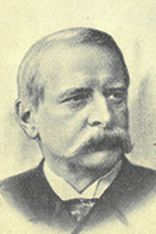
Dr. Victor von Bojanowski
Term of office: 16. Februar 1888 - 29. März 1892
A diplomat as head of the Patent Office: Ferdinand Ernst Richard Victor von Bojanowski, born on 4 June 1831 in Berlin, was consul in Moscow, London and Budapest before becoming president. During his term of office, the Patent Act was amended and the "Law on the Protection of Utility Models and Designs" was passed. As a result, applications rose sharply from 1891 onwards.
Bojanowski wrote the paper "Über die Entwicklung des deutschen Patentwesens in der Zeit von 1877 bis 1889" (On the development of the German Patent System in the period from 1877 to 1889). He died of pneumonia in Berlin-Charlottenburg during his term of office.
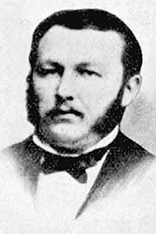
Otto von Koenen
Term of office: 1. Juli 1892 - 5. Juli 1895
During Koenen's term of office, the "Gesetz zum Schutz der Waarenbezeichnungen" (Law for the Protection of Product Designation) came into force on 12 May 1894. This shifted the registration and administration of goods designations from the locally competent courts to the Imperial Patent Office. The law resulted in a flood of trade mark applications and made further recruitment necessary. On 16 October 1894, protection for the first German trademark "Perkeo" (for lamps and lamp parts) was registered at the Patent Office.
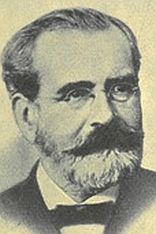
Otto von Huber
Term of office: 9. Oktober 1895 - 1. Februar 1902
Until Otto von Huber's time in office, the Imperial Patent Office had steadily expanded and therefore had to move to new buildings again and again. This was finally to change: In his last year in office, von Huber approved the plan for imposing new premises. The building area measured 23,600 square metres - larger than three football fields.
Such a large site was not easy to find in Berlin, especially as it was to be as centrally located as possible. The site of the vacant Guard Cuirassier Barracks in Kreuzberg seemed suitable. However, several hundred square metres of private land had to be bought by the Kaiserreich, so that the new building site stretched along the entire length of Gitschiner Straße from Alte Jakobstraße to Alexandrinenstraße. This is where the new building was to be constructed.
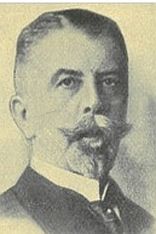
Dr. Carl Hauß
Term of office: 5. November 1902 - 1. Juli 1912
Carl Hauß, who was born in Löbejün on 25 January 1855 and had studied law in Jena and Munich, joined the Patent Office in 1883. After a stint at the Reich Office of the Interior, he returned as President. During his term of office, the new office building on Gitschiner Straße was completed - at that time one of the largest buildings in the whole of Berlin.
Construction had taken only 28 months and the building was ready in 1905. The construction cost 7.75 million marks, the furnishing another 200,000 marks. The complex had 700 service rooms for almost 1,000 employees, 12 meeting rooms, 11 cashier's rooms, a large display hall and a library that extended over six floors.
The "Berliner Tageblatt" reported before the planned move, which began on 8 September 1905: "It will be one of the largest moves ever seen in Berlin. No less than 100 furniture vans have been ordered to accomplish the move in 12 working days; the cost will be about 50,000 marks." Allegedly, work continued even in the furniture vans during the move. In any case, Carl Hauß often expressed his pride in the motivation and reliability of his employees. He died in Berlin on 30 May 1942.
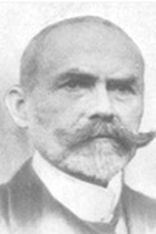
Heinrich Robolski
Term of office: 1. April 1912 - 1. August 1921
The lawyer, born on 18 August 1858 in Stettin, first worked for the Imperial Patent Office in 1885. When Carl Hauß became President, Robolski took over his department for patents and utility models at the Reich Office of the Interior, which was responsible for the Patent Office at the time. In 1912, he became President - again as Hauß' successor. In 1917, the Patent Office was assigned to the portfolio of the Ministry of Justice. It has remained there until today.
During Robolski's term of office, the Patent Office began to employ women. This was still quite bold at the time, even though the new female employees were initially only hired as assistants in the office area.
In November 1918, the Kaiser had abdicated and the Republic had been proclaimed: Consequently, on 24 March 1919, Robolski ordered the „Kaiserliches Patentamt“ to be renamed the "Reichspatentamt". Robolski, who was also the author of several specialist books on intellectual property, died in 1939.
Weiter >

Last updated: 10 December 2025
Not only protecting innovations
Social Media